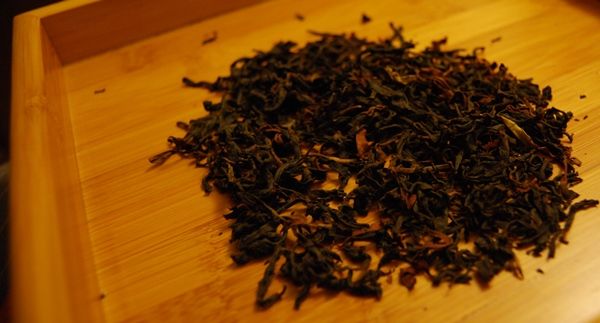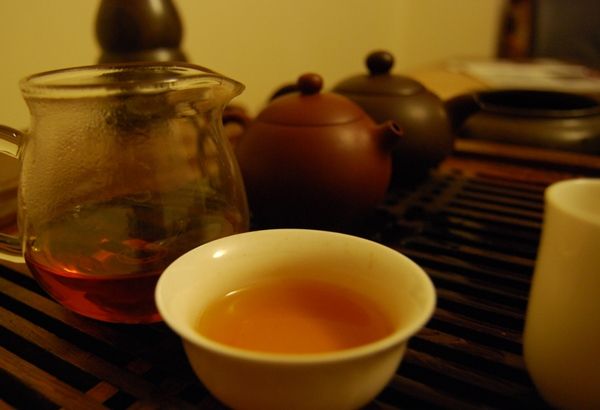This is one of those cases in which the howlingly, shockingly bad quality of the photography is in inverse proportion to the quality of the tea. Scroll down and see if you agree with my assessment of the images. There is significant suction being displayed in the quality down there...
Le sac magique
That said, it is a great little tea. I say "little" because it's hongcha, and because hongcha is usually quite humble in outlook and price, compared with some other types of tea. However, this hongcha costs $6/50g, which places it at $48/400g, which is the price of a fairly serious cake of pu'ercha.
Such is the nature of pricing with hongcha and wulong: the price per unit weight per unit quality can be much, much higher than with pu'ercha. Even though the latter can be expensive, we must remember that a bing is actually quite a lot of tea. Conversely, though hongcha and wulong might seem inexpensive, we must remember that we are typically buying very small amounts.
Not your usual hongcha
It will not surprise you to learn that, as shown above, it looks like hongcha. Or does it? Certainly the colour is the recognisably dark shade of fermentation, but these leaves are purple-lead pu'ercha leaves from Dehong, far out to the west of Yunnan, past Simao prefecture, even past Lincang prefecture.
Thus, they are much longer than we would otherwise expect from hongcha; they look rather like a heavily-oxidised dancong. The scent is remarkable: the purple leaves have their own unique sweetness, which is heightened further by the full oxidation of the hongcha processing. Despite the cold day on which I drank this tea, the room was immediately filled with the forthright sweetness.
Chunky
Candy-like and sweet, yet also very cooling in the mouth, this tea is a highly unusual and very active example. There is also a range of flavours packed into the thick, red soup, including something akin to sweet bamboo. When you make hongcha out of such interesting leaves, good things can happen.
Like pu'ercha, it is thick, and smooth - it fills the mouth more than the wulong it resembles, and seems satisfyingly chunky in its texture. Yet, thanks to its hongcha processing, it also lends a warmth and maltiness that are very welcome.
Complex, comforting, and yet also very cooling (due to its pu'ercha activity), this is a surprising hongcha, and highly enjoyable. Thanks to Scott for the sample.




3 comments:
This is my favourite hongcha for the last year, and it seems to improve with time.
Is it this one?
http://www.yunnansourcing.com/store/product.php?id_product=2038
Dear Norbert,
Thanks for the note - perhaps I'll grab some for casusal sessions, and for office inspiration!
Dear Dragonphlu,
I'm afraid that I can't confirm it for sure, as the sample was a kind gift from Scott, but I think that's it.
Toodlepip,
Hobbes
Post a Comment